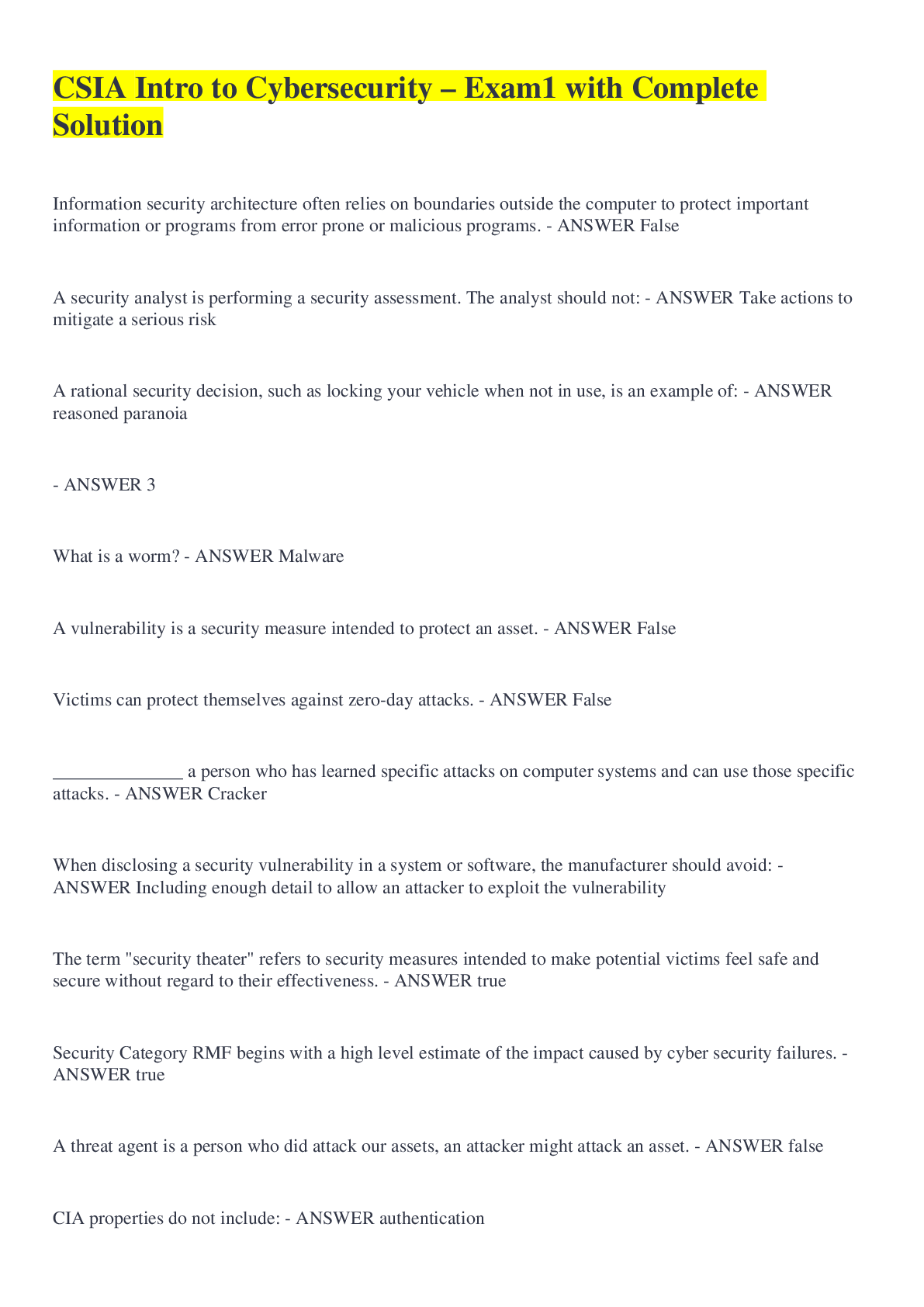NR 326 – EXAM 1 REVIEW MENTAL; latest (2019/20), All Answers correct.
Document Content and Description Below
MENTAL NR 326 – EXAM 1 REVIEW Chapter 2. Mental Health and Mental Illness: Historical and Theoretical Concepts 1. The nurse recognizes which principle underlies effective patient teaching? A. Modera... te to severe anxiety increases patient learning. B. Mild anxiety enhances patient learning. C. Panic- level anxiety improves nurses’ teaching. D. Severe anxiety intensifies concentration and enhances attention. 2. A male high school student is attracted to a female teacher. The school nurse overhears the student say, “I know she wants me.” The nurse recognizes the student is using which defense mechanism? A. Displacement B. Projection C. Rationalization D. Sublimation Chapter 3. Concepts of Psychobiology Which client statement indicates the nurse’s teaching about the effect of circadian rhythms is effective? A. “When I dream about my mother’s horrible train accident, I become hysterical.” B. “I get really irritable during my menstrual cycle.” C. “I’m a morning person, so I get my best work done in the a.m.” D. “Every February, I tend to experience periods of sadness.” A client experiencing sleep apnea underwent a sleep study. During stage 3 of sleep, a delta rhythm was recorded. The nurse recognizes that a delta rhythm is characterized by which sleep activity? A. Dozing B. Deep and restful sleep C. Relaxed waking D. Dreaming Chapter 5 Legal and Ethical Issues Group therapy is strongly encouraged, but not mandatory, on an inpatient psychiatric unit. The unit manager’s policy is that clients can make a choice about whether to attend group therapy. Which ethical principle does the unit manager’s policy preserve? A. Justice B. Autonomy C. Veracity D. Beneficence Which client should a nurse identify as a potential candidate for involuntarily commitment? A. A client living under a bridge in a cardboard box B. A client verbalizing intent to commit suicide C. A homeless client refusing to bathe D. A client who eats waste out of a garbage can A psychiatrist working on an inpatient unit refuses to treat clients who do not have health insurance coverage and also prematurely discharges clients whose health insurance benefits have expired. The nurse recognizes the psychiatrist is violating which ethical principle? A. Autonomy B. Beneficence C. Nonmaleficence D. Justice Which situation contradicts the ethical principle of veracity? A. A nurse provides a client with outpatient resources to benefit recovery. B. A nurse refuses to give information to a physician who is not responsible for a client’s care. C. A nurse tricks a client into seclusion by asking the client to carry linen to the seclusion room. D. A nurse treats all clients equally, regardless of the acuity of their illness. Which situation exemplifies both assault and battery? A. The nurse becomes angry, calls the client offensive names, and withholds treatment. B. The nurse threatens to “tie down” the client and then does so against the client’s wishes. C. The nurse hides the client’s clothes and medicates the client to prevent elopement. D. The nurse restrains the client without just cause and communicates this to family. Chapter 7. Relationship Development What is the most essential task for a nurse prior to forming a therapeutic relationship with a client? A. Clarify personal attitudes, values, and beliefs. B. Obtain thorough assessment data. C. Determine the client’s length of stay. D. Establish personal goals for the interaction. Which of the following is the priority nursing action during the orientation (introductory) phase of the nurse-client relationship? A. Acknowledge the client’s actions and generate alternative behaviors. B. Establish rapport and develop mutually agreeable treatment goals. C. Attempt to find alternative placement for the client. D. Explore how thoughts and feelings may adversely impact nursing care. Which outcome does the nurse expect during the working phase of the nurse-client relationship? A. The client gains insight and incorporates alternative behaviors. B. The client and nurse establish rapport and mutually develop treatment goals. C. The client explores feelings related to reentering the community. D. The client explores personal strengths and weaknesses that impact behaviors. Which of the following is the nurse’s primary goal during the pre-interaction phase of the nurse-client relationship? A. Evaluate goal attainment and ensure therapeutic closure. B. Establish trust and formulate a contract for intervention. C. Explore self-perceptions. D. Promote client change. Chapter 8. Therapeutic Communication A client diagnosed with Dependent Personality Disorder states, “Do you think I should move from my parent’s house and get a job?” Which nursing response is most appropriate? A. “It would be best to do that to increase independence.” B. “Why would you want to leave a secure home?” C. “Let’s discuss and explore all of your options.” D “I’m afraid you would feel very guilty leaving your parents.” When interviewing a client, which nonverbal behavior should a nurse employ? A. Maintaining indirect eye contact with the client B. Providing space by leaning back away from the client C. Sitting squarely, facing the client D. Maintaining open posture with arms and legs crossed A mother rescues two of her four children from a house fire. In an emergency department, she cries, “I should have gone back in to get them. I should have died, not them.” Which of the following responses by the nurse is an example of reflection? A. “The smoke was too thick. You couldn’t have gone back in.” B. “You’re feeling guilty because you weren’t able to save your children.” C. “Focus on the fact that you could have lost all four of your children.” D. “It’s best if you try not to think about what happened. Try to move on.” Which example of a therapeutic communication technique would be effective in the planning phase of the nursing process A. “We’ve discussed past coping skills. Let’s see if these coping skills can be effective now.” B. “Please tell me in your own words what brought you to the hospital.” C. “This new approach worked for you. Keep it up.” D. “I noticed that you seem to be responding to voices that I do not hear.” After fasting from 10 p.m. the previous evening, a client finds out that the blood test has been canceled. The client swears at the nurse and states, “You are incompetent!” Which is the nurse’s best response? A. “Do you believe that I was the cause of your blood test being canceled?” B. “I see that you are upset, but I feel uncomfortable when you swear at me.” C. “Have you ever thought about ways to express anger appropriately?” D. “I’ll give you some space. Let me know if you need anything.” Cha Chapter 10. Therapeutic Groups During a therapeutic group, two clients engage in an angry verbal exchange. The nurse leader interrupts the exchange and excuses both of the clients from the group. The nurse has demonstrated which leadership style? A. Autocratic B. Democratic C. Laissez-faire D. Bureaucratic During a therapeutic group, which nursing action demonstrates a laissez-faire leadership style? A. The nurse mandates that all group members reveal an embarrassing personal situation. B. The nurse asks for a show of hands to determine group topic preference. C. The nurse sits silently as the group members stray from the assigned topic. D. The nurse shuffles through papers to determine the facility policy on length of group. During a group session, which client statement demonstrates that the group has progressed to the middle (working) phase of group development? A. “It’s hard for me to tell my story when I’m not sure about the reactions of others.” B. “I think Joe’s Antabuse suggestion is a good one and might work for me.” C. “My situation is very complex, and I need professional, not peer, advice.” D. “I am really upset that you expect me to solve my own problems.” Which group function should the nurse utilize to help an extremely withdrawn, paranoid client increase feelings of security? A. Socialization B. Support C. Empowerment D. Governance When planning group therapy, the nurse identifies which configuration as most optimal for a therapeutic group? A. Open-ended membership, circle of chairs, group size of 5 to 10 members B. Open-ended membership, chairs around a table, group size of 10 to 15 members C. Closed membership, circle of chairs, group size of 5 to 10 members D. Closed membership, chairs around a table, group size of 10 to 15 members Cha Chapter 12. Milieu Therapy—The Therapeutic Community An angry client on an inpatient unit approaches a nurse, stating, “Someone took my lunch! People need to respect others, and you need to do something about this now!” The nurse’s response should be guided by which basic assumption of milieu therapy? A. Conflict should be avoided at all costs on inpatient psychiatric units. B. Conflict should be resolved by the nursing staff. C. Every interaction is an opportunity for therapeutic intervention. D. Conflict resolution should be addressed only during group therapy. A client on an inpatient unit angrily states to a nurse, “Peter is not cleaning up after himself in the community bathroom. You need to address this problem.” Which is the appropriate nursing response? A. “I’ll talk to Peter and present your concerns.” B. “Why are you overreacting to this issue?” C. “You should bring this to the attention of your treatment team.” D. “I can see that you are angry. Let’s discuss ways to approach Peter with your concerns.” A newly admitted client asks, “Why do we need a unit schedule? I’m not going to these groups. I’m here to get some rest.” Which is the most appropriate nursing reply? A. “Group therapy provides the opportunity to learn and practice new coping skills.” B. “Group therapy is mandatory. All clients must attend.” C. “Group therapy is optional. You can go if you find the topic helpful and interesting.” D. “Group therapy is an economical way of providing therapy to many clients concurrently.” A client diagnosed with Schizophrenia functions well and is bright, spontaneous, and interactive during hospitalization but then decompensates after discharge. What does the milieu provide that may be missing in the home environment? A. Peer pressure B. Structured programming C. Visitor restrictions D. Mandated activities A client tells the nurse she is anxious and loudly demands the nurse give her Ativan right now. The nurse replies, “I understand you you are having anxiety; however, demanding medication in a loud voice is unacceptable behavior.” Which type of intervention is tis is the nurse implementing? A. Establishing trust B. Limit setting C. Validating feelings D. Patient teaching Cha Chapter 13. Crisis Intervention A mother is concerned about her ability to perform in her new role. She is quite anxious and refuses to leave the postpartum unit. To offer effective client care, a nurse should recognize which information about this type of crisis? A. This type of crisis is precipitated by unexpected external stressors. B. This type of crisis is precipitated by preexisting psychopathology. C. This type of crisis is precipitated by an acute response to an external situational stressor. D. This type of crisis is precipitated by normal life-cycle transitions that overwhelm the client. A client comes to a psychiatric clinic, experiencing sudden extreme fatigue and decreased sleep and appetite. The client works 12 hours a day and rates anxiety as 8/10 on a numeric scale. Which long-term outcome is realistic to address the client’s crisis? A. The client will change his or her type A personality traits to more adaptive ones by week 1. B. The client will list five positive self-attributes. C. The client will examine how childhood events led to an overachieving orientation. D. The client will return to previous adaptive levels of functioning by week 6. After threatening to jump off a bridge, a client is brought to an emergency department by police. Which question should the nurse ask first to assess for suicide potential? A. “Are you currently thinking about harming yourself?” B. “Why do you want to harm yourself?” C. “Have you thought about the consequences of your actions?” D. “Who is your emergency contact person?” An involuntarily committed client, when offered a dinner tray, pushes it off the bedside table onto the floor. Which is the nurse’s priority intervention? A. Initiate forced medication protocol. B. Help the client to explore the source of anger. C. Ignore the act to avoid reinforcing the behavior. D. Set firm limits on the behavior. A college student who was nearly raped while jogging completes a series of appointments with a rape crisis nurse. Which client statement, made at the final session, most clearly suggests the goals of crisis intervention have been met? A. “You’ve really been helpful. Can I count on you for continued support?” B. “I don’t work out anymore.” C. “I’m really glad I didn’t go home. It would have been hard to come back.” D. “I carry mace when I jog. It makes me feel safe and secure.” Chapter 14. Assertiveness Training Two clients are roommates on an inpatient psychiatric unit. At breakfast, client A, who had been missing her gold locket, notices client B wearing it. Which does the nurse recognize as a nonassertive or passive behavioral response from client A? A. Client A ignores the situation. B. Client A discusses the situation with her nurse and develops a plan of action. C. Client A immediately approaches client B and pulls the necklace off her neck. D. Client A offers to wash client B’s clothes and “accidentally” spills bleach in the water. A client on an inpatient unit is angry with a peer. During lunch, when the peer is not looking, the client spits into his soup. How would the nurse document this interaction? A. “Client is displaying assertive behaviors.” B. “Client is displaying aggressive behaviors.” C. “Client is displaying passive behaviors.” D. “Client is displaying passive-aggressive behaviors.” A client continually waits more than an hour before being seen at the mental health clinic. The client approaches the nurse and states, “When I have to wait for more than an hour to be seen, I feel like my time is not important.” The nurse recognizes this as what type of behavior? A. Aggressive behavior B. Assertive behavior C. Passive-aggressive behavior D. Passive behavior Two clients get into an intense argument regarding TV program selections. The nurse turns off the TV and asks the clients to go to their rooms to cool off, and tells them they will discuss and attempt to resolve the problem afterward. Which assertive technique is the nurse using? A. Defusing B. Clouding or fogging C. Responding as a broken record D. Shifting from content to process An emergency department nurse, who has worked 10 straight days, is pulled to the psychiatric unit. Which of the emergency department nurse’s statements represent a passive-aggressive response? A. “Get someone else to work 3 to 11! I’ve been working 10 days straight, and I need a break!” B. “Okay. I’ll do it,” then purposefully leaves paperwork undone when leaving the unit at 11 p.m. C. “I have worked 10 days straight, and I cannot work tonight. I will work for you tomorrow if you need me.” D. “Yes, I’ll do it. Anything to keep peace with the hospital administration is a good thing.” Chapter 16. Anger and Aggression Management Which client statement demonstrates improvement in anger and aggression management? A. “I realize I have a problem expressing my anger appropriately.” B. “I know I can’t use physical force anymore, but I can intimidate someone with my words.” C. “It’s bad to feel as angry as I feel. I’m working on eliminating this poisonous emotion entirely.” D. “Because my wife seems to be the one to set me off, I’ve decided to remain separated from her.” A nurse is caring for four clients. Which client does the nurse identify is least prone to developing problems with anger and aggression? A. A child raised by a physically abusive parent B. An adult with a history of epilepsy C. A young adult living in the ghetto of an inner city D. An adolescent raised by immigrant parents An adult client assaults another client and is placed in restraints. Which client statement alerts the nurse that further assessment is necessary? A. “I hate all of you!” B. “My fingers are tingly.” C. “You wait until I tell my lawyer.” D. “I have a sinus headache.” After the client’s restraints are removed, the staff discusses the incident and establishes guidelines for the client’s return to the therapeutic milieu. Which unit procedure is the staff implementing? A. Milieu reenactment B. Treatment planning C. Crisis intervention D. Debriefing A client diagnosed with Paranoid Schizophrenia has a history of aggravated assault. The nurse assigns “Risk for other-directed violence” as the client’s priority nursing diagnosis. Which is an appropriate, correctly written outcome for the client? A. The client will not verbalize anger or hit anyone. B. The client will verbalize anger rather than hit others. C. The client will not inflict harm on others during this shift. D. The client will be restrained if verbal or physical abuse is observed during this shift. Chapter 18. Behavior Therapy A kindergarten rule states that if unacceptable behavior occurs, a child’s personalized fish will be moved to the sea grass. Children who behave keep their fish out of the sea grass. The school nurse identifies this intervention is based on which principle of behavior therapy? A. Classical conditioning B. Conditioned response C. Positive reinforcement D. Negative reinforcement A client is diagnosed with an anxiety disorder. The nurse counselor recommends the behavioral technique of reciprocal inhibition. The client asks, “What’s that?” Which is the best nursing reply? A. “At the beginning of this intervention, a contract will be drawn up explicitly stating the behavior change agreed upon.” B. “By introducing an adaptive behavior that is mutually exclusive to your maladaptive behavior, we will expect subsequent behavior to improve.” C. “Through a series of increasingly anxiety-provoking steps, we will gradually increase your tolerance to anxiety.” D. “In one intense session, you will be exposed to a maximum level of anxiety that you will learn to tolerate.” A 2-year-old engages in frequent temper tantrums that usually result in the parents giving in to demands. During family therapy, which is the best nursing statement when counseling the parents? A. “You are shaping your child’s behavior.” B. “Your child has modeled your behavior.” C. “You are positively reinforcing your child’s behavior.” D. “You are negatively reinforcing your child’s behavior.” When seeking special privileges, a child always chooses to ask the mother rather than the father. The father is more apt to disagree with the child’s requests, whereas the mother usually consents. Which component of operant conditioning explains the child’s choice? A. Conditioned stimuli B. Unconditioned stimuli C. Aversive stimuli D. Discriminative stimuli Parents decide to try the nurse practitioner’s suggestion of time-out when their child misbehaves. Which is the nurse practitioner’s best statement when teaching the parents? A. “Correct your child’s behavior by spanking for a specified time period.” B. “Ignore the child’s negative behavior.” C. “Add positive reinforcement for acceptable behavior.” D. “Temporarily move your child to an area where behavior is not being reinforced.” Parents of a 3-year-old have noticed an improvement in behavior because of using a time-out behavioral approach. Which aspect of time-out therapy may be responsible for this child’s improved behavior? A. Negative reinforcement discourages maladaptive behavior. B. Positive reinforcement is removed. C. Covert sensitization is being applied. D. Reciprocal inhibition is eliminated. Chapter 19. Cognitive Therapy A nursing instructor is teaching about the didactic aspects of cognitive therapy. Which student statement indicates a deficit in meeting the learning objectives of this content? A. “The therapist provides information about the process of cognitive therapy.” B. “The therapist uses guided imagery to elicit automatic thoughts.” C. “The therapist provides information about how cognitive therapy works.” D. “The therapist uses reading assignments to reinforce learning.” A successful business executive continually thinks her job accomplishments are not adequate. The nurse recognizes the client’s thinking reflects which cognitive error? A. Minimization B. Dichotomous thinking C. Arbitrary inference D. Personalization A nursing student states, “The instructor gave me a failing grade on my research paper. I know it’s because the instructor doesn’t like me.” Which cognitive error does the nurse recognize in this student’s statement? A. Dichotomous thinking B. Catastrophic thinking C. Magnification D. Overgeneralization A nursing student evaluates her group project partner as irresponsible because of minimal participation in planning. When told of this situation, the nursing instructor plans to use the cognitive technique of examining the evidence. Which response by the nursing instructor exemplifies this technique? A. “Let’s look at the potential reasons why your partner has not participated.” B. “How would you define irresponsibility?” C. “Has it occurred to you that your partner may be working on the project at home?” D. “Are you telling me that you feel totally responsible for this project?” Chapter 37. The Bereaved Individual A nursing student evaluates her group project partner as irresponsible because of minimal participation in planning. When told of this situation, the nursing instructor plans to use the cognitive technique of examining the evidence. Which response by the nursing instructor exemplifies this technique? A. “Let’s look at the potential reasons why your partner has not participated.” B. “How would you define irresponsibility?” C. “Has it occurred to you that your partner may be working on the project at home?” D. “Are you telling me that you feel totally responsible for this project?” A teenager has recently lost a parent. Which grieving behavior should the school nurse expect when assessing this client? A. Denial of personal mortality B. Preoccupation with the loss C. Clinging behaviors and personal insecurity D. Aggressive and defiant behaviors A nursing instructor is teaching about the typical grieving behaviors of Chinese Americans. Which student statement indicates that further instruction is needed? A. “In this culture, the color red is associated with death and is considered bad luck.” B. “In this culture, there may be an innate fear of death.” C. “In this culture, emotions may not be expressed openly.” D. “In this culture, death and bereavement are sometimes centered on ancestor worship.” Bob Taylor’s home was recently destroyed in a fire. Margaret Smith is 35 years old and has just learned that she must have a hysterectomy. Which scenario will most likely trigger a grief response? A. Taylor’s home destroyed by fire. B. Smith’s pending hysterectomy. C. Neither scenario by itself could trigger the grief response. D. Both scenarios could trigger individual grief responses. Rebecca expresses to the nurse that she feels like she didn’t do enough to prevent the loss of her father. Which of the following interventions should the nurse use to address Rebecca’s feelings? A. Encourage Rebecca to examine the guilt and validate the appropriateness of this feeling. B. Review the circumstances of the loss and the reality that it could not be prevented. C. Role-play the events and assist Rebecca with understanding the decisions leading to the loss. D. Explain that this feeling is a pathological defense that will prevent her from progressing through the stages of grief. Chapter 29. Somatic Symptom and Dissociative Disorders A client diagnosed with Somatic Symptom Disorder is most likely to exhibit which personality disorder characteristics? A. Uses “splitting” and manipulation in relationships B. Is socially irresponsible, exploitative, and guiltless and disregards rights of others C. Expresses heightened emotionality, seductiveness, and strong dependency needs D. Uncomfortable in social situations; perceived as timid, withdrawn, cold, and strange The nurse is working with a client diagnosed with Somatic Symptom Disorder. What predominant symptoms should the nurse expect to assess? A. Disproportionate and persistent thoughts about the seriousness of one’s symptoms B. Amnestic episodes in which the client is pain free C. Excessive time spent discussing psychosocial stressors D. Lack of physical symptoms Which is considered an appropriate outcome when planning care for an inpatient client diagnosed with Somatic Symptom Disorder? A. The client will admit to fabricating physical symptoms to gain benefits by day 3. B. The client will list three potential adaptive coping strategies to deal with stress by day 2. C. The client will comply with medical treatments for physical symptoms by day 3. D. The client will openly discuss physical symptoms with staff by day 4. An inpatient client is newly diagnosed with Dissociative Identity Disorder (DID) stemming from severe childhood sexual abuse. Which is the priority nursing intervention? A. Encourage exploration of sexual abuse. B. Encourage guided imagery. C. Establish trust and rapport. D. Administer antianxiety medications. Which of the following statements accurately describes dissociative fugue? A. Dissociative fugue is not precipitated by stressful events. B. Dissociative fugue is characterized by sudden, unexpected travel or bewildered wandering with inability to recall some or all of one’s past. C. Dissociative amnesia and dissociative fugue are completely different types of disorders. D. Dissociative fugue is characterized by a sense of observing oneself from outside the body. Neurological tests have ruled out pathology in a client’s sudden lower-extremity paralysis. Which nursing care should be included for this client? A. Deal with physical symptoms in a detached manner. B. Challenge the validity of physical symptoms. C. Meet dependency needs until the physical limitations subside. D. Encourage a discussion of feelings about the lower-extremity problem. The nurse is caring for a patient diagnosed with Conversion Disorder. Which statement made by the nurse is most therapeutic for this patient? A. “I think you could get over this condition if you tried hard enough. A positive outlook can change everything.” B. “I’m so sorry that your back hurts so much. Yes, I’m happy to get you a wheelchair so you don’t have to walk to meals.” C. “I think that your symptoms are just in your head. Therapy can help you get rid of them.” D. “I am pleased to hear you say that you recognize that your anxiety may be the cause of your swallowing difficulties.’ [Show More]
Last updated: 7 months ago
Preview 1 out of 14 pages
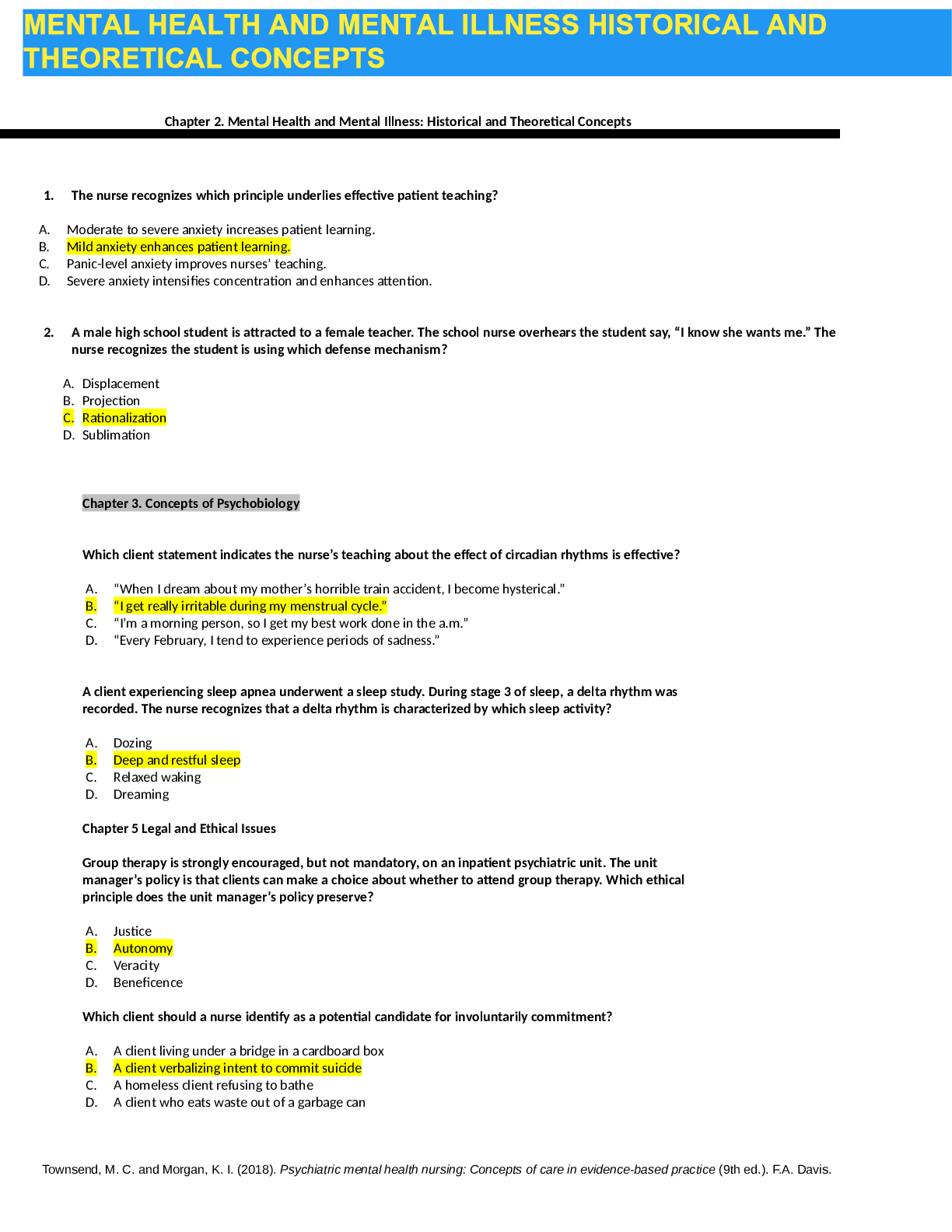
Reviews( 0 )
Document information
Connected school, study & course
About the document
Uploaded On
Feb 02, 2022
Number of pages
14
Written in
Additional information
This document has been written for:
Uploaded
Feb 02, 2022
Downloads
0
Views
70

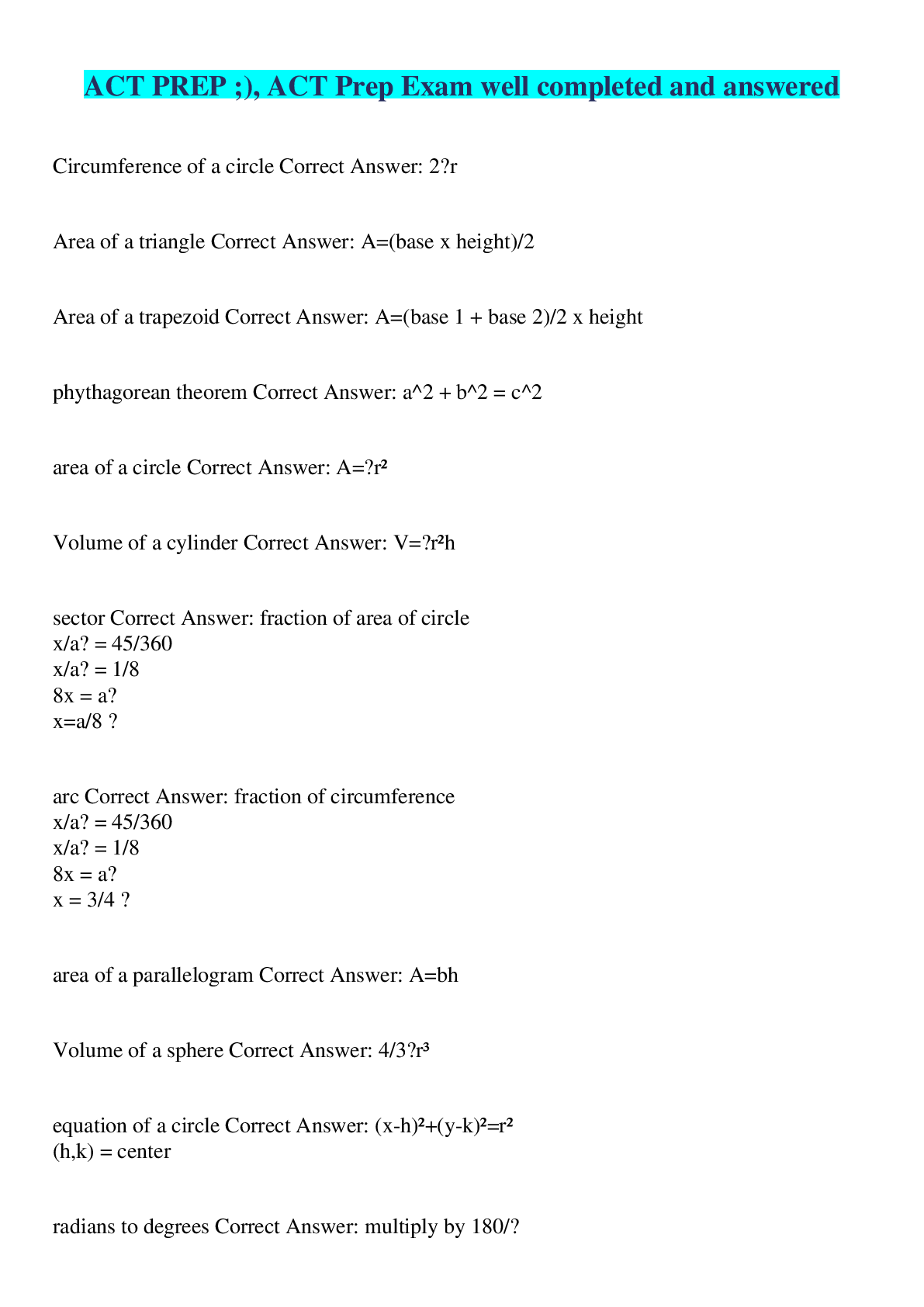
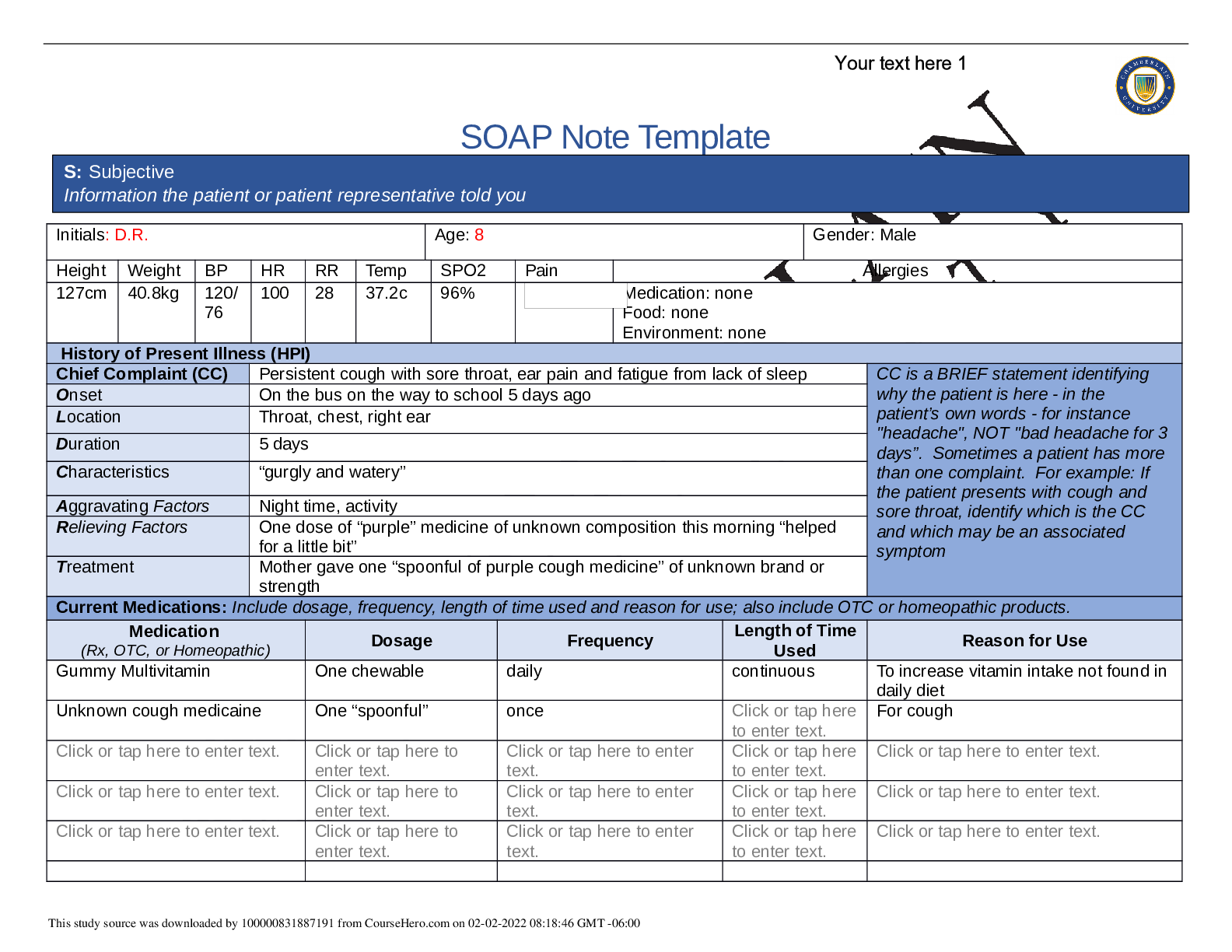


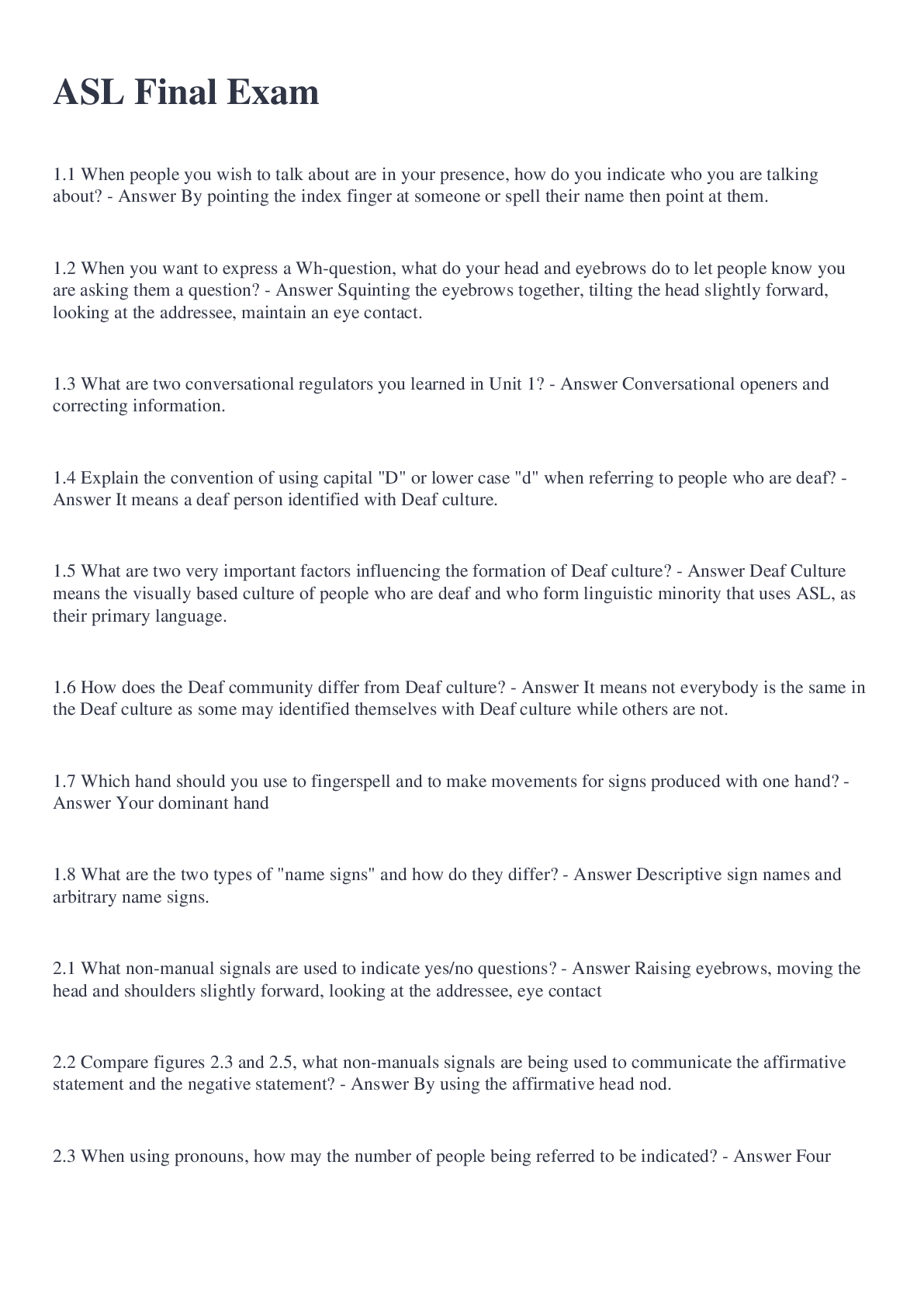
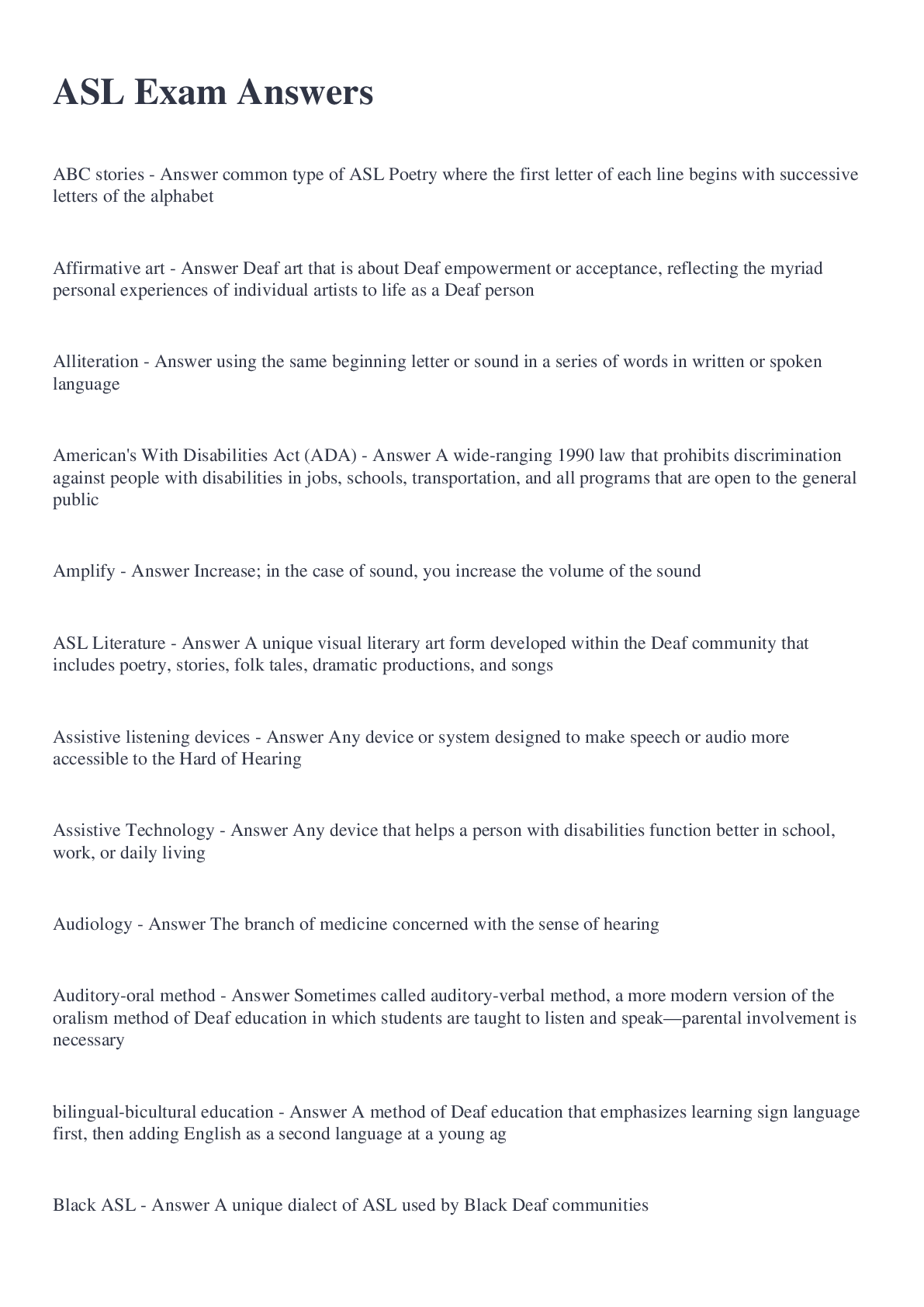


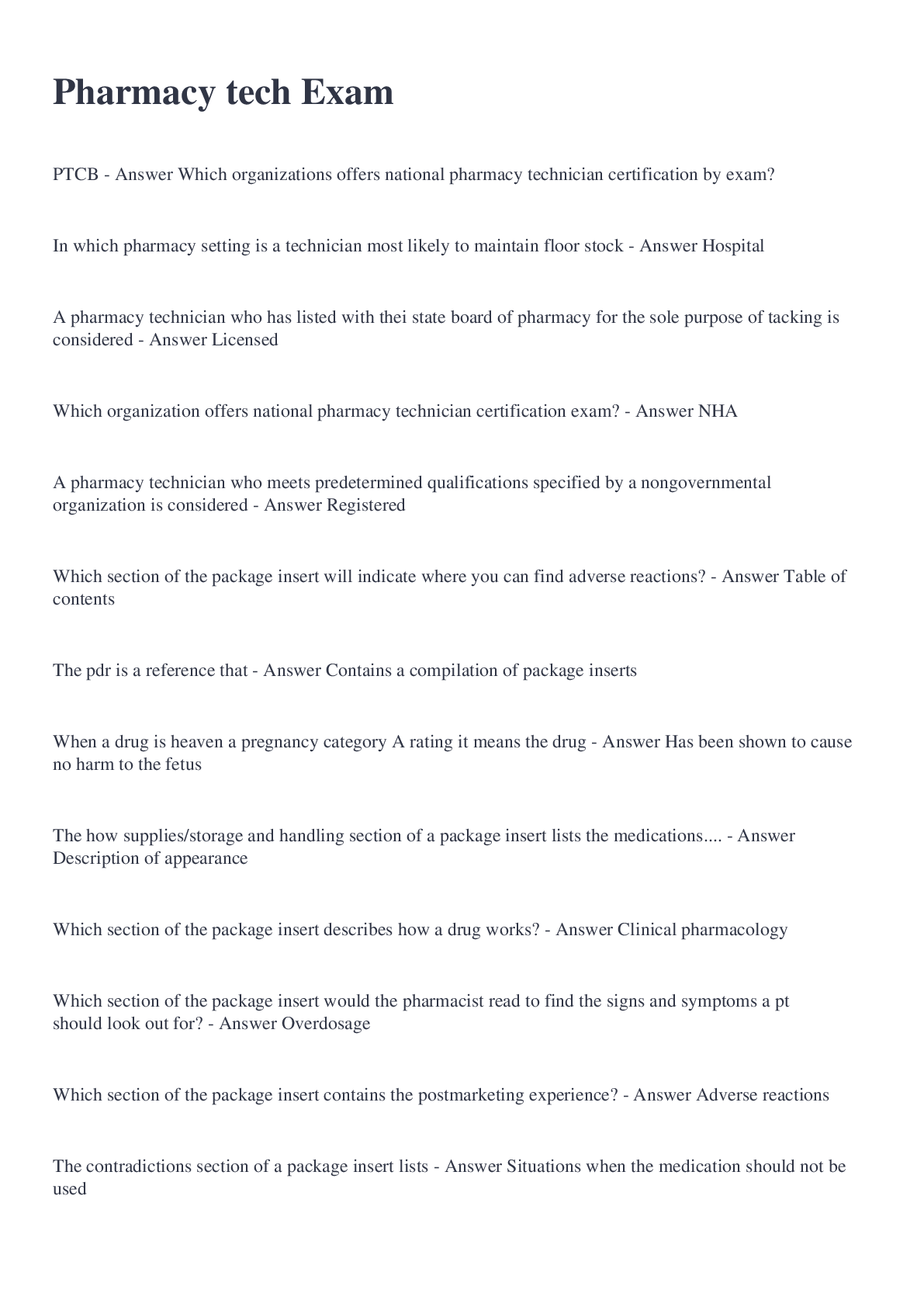
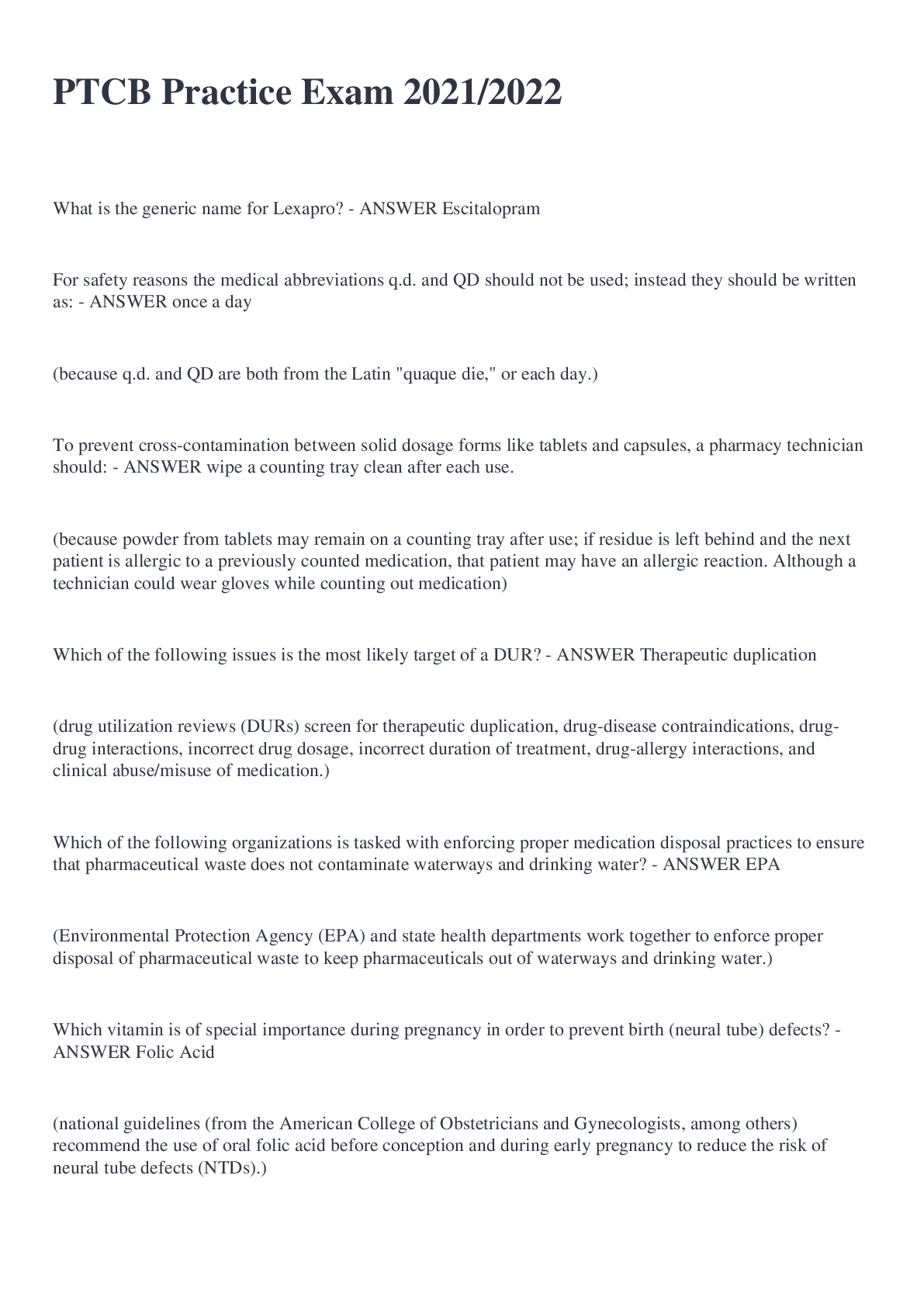

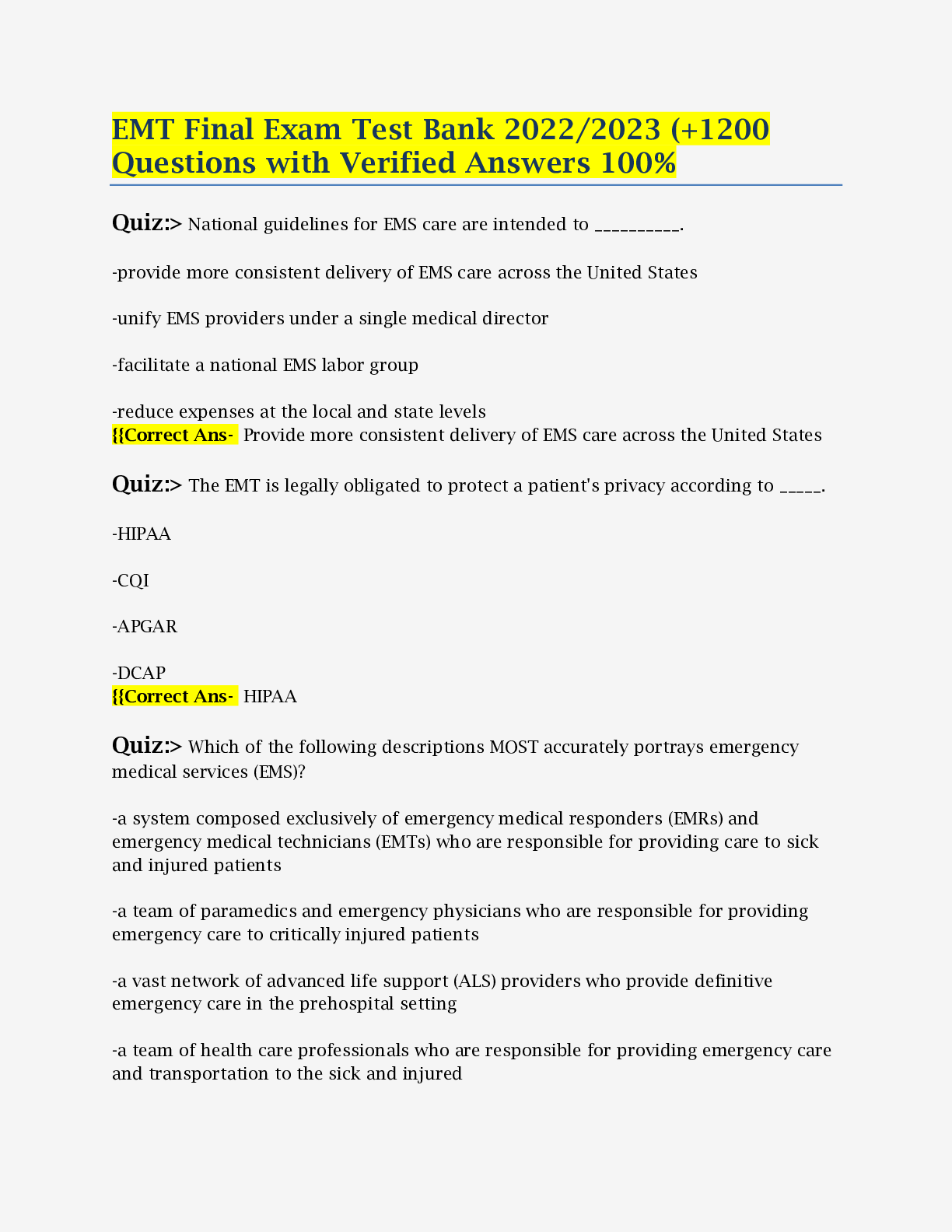
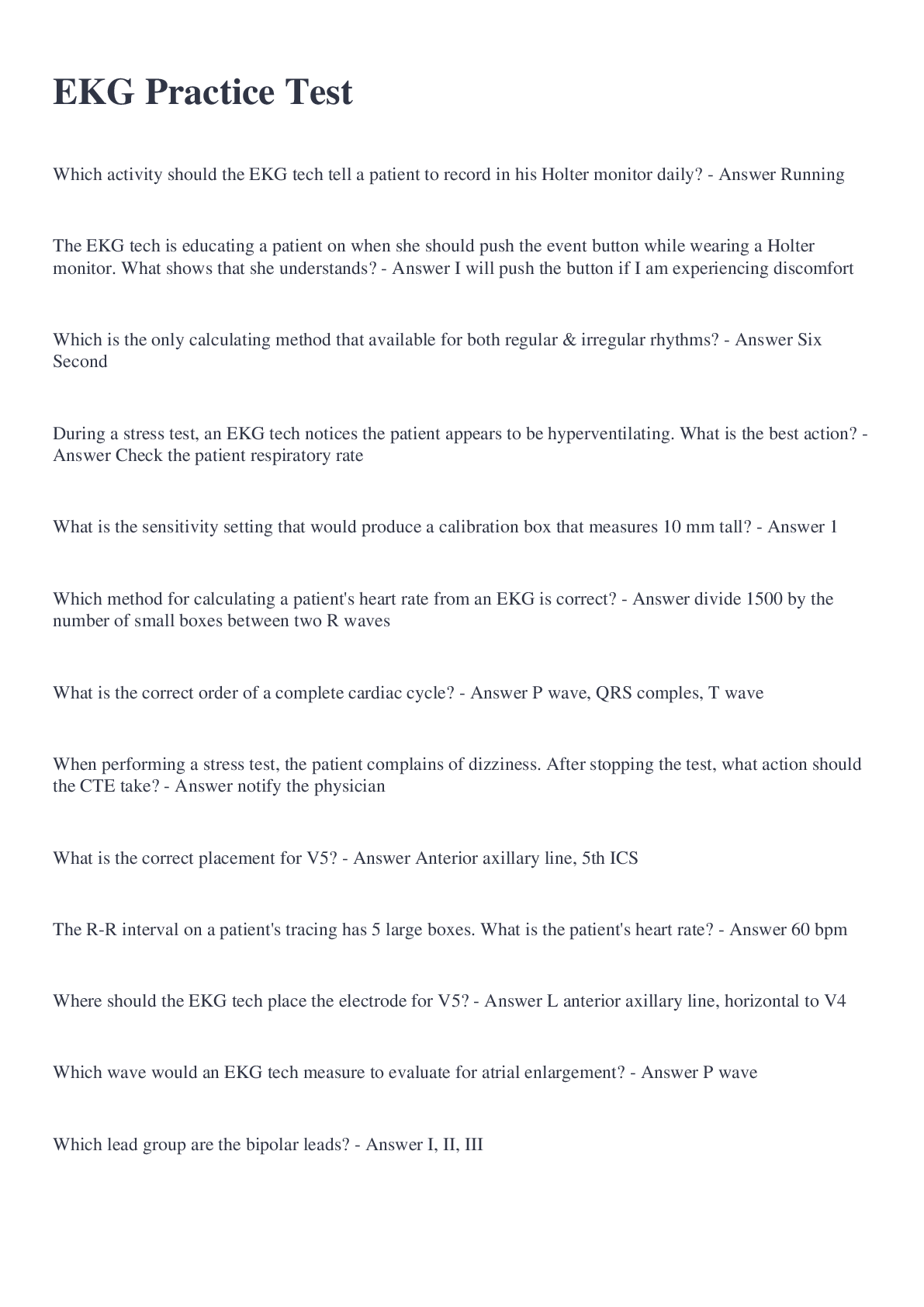
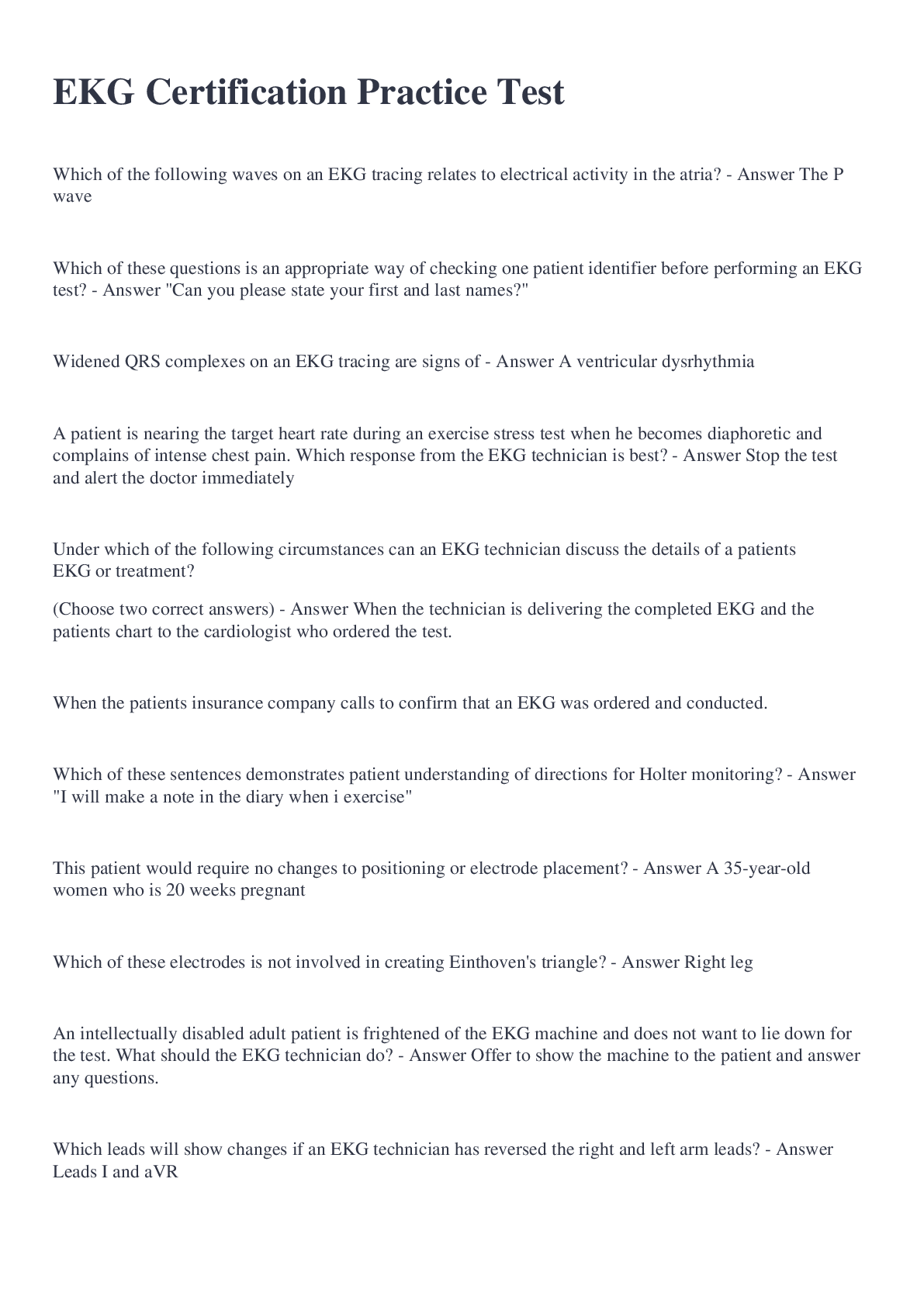
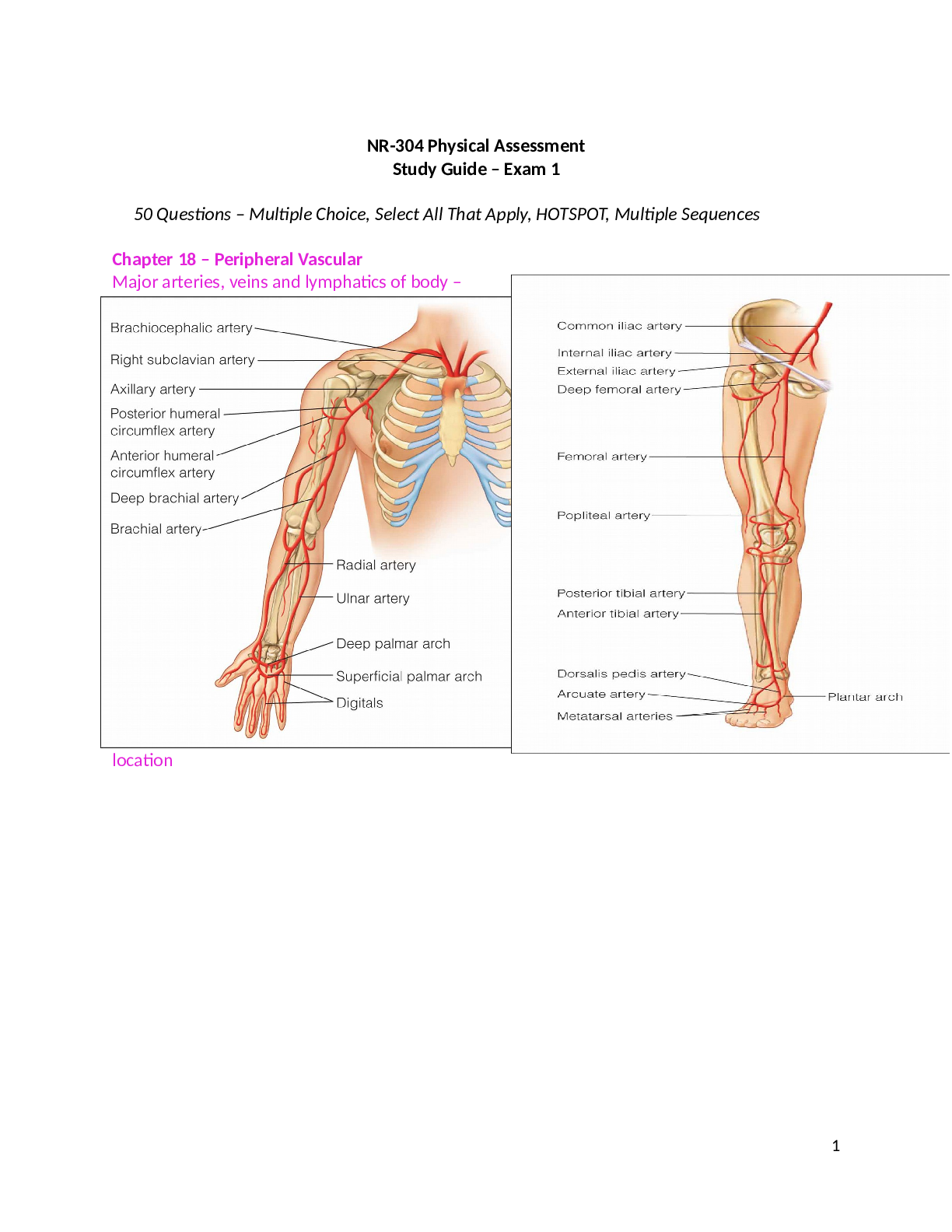


.png)
.png)
